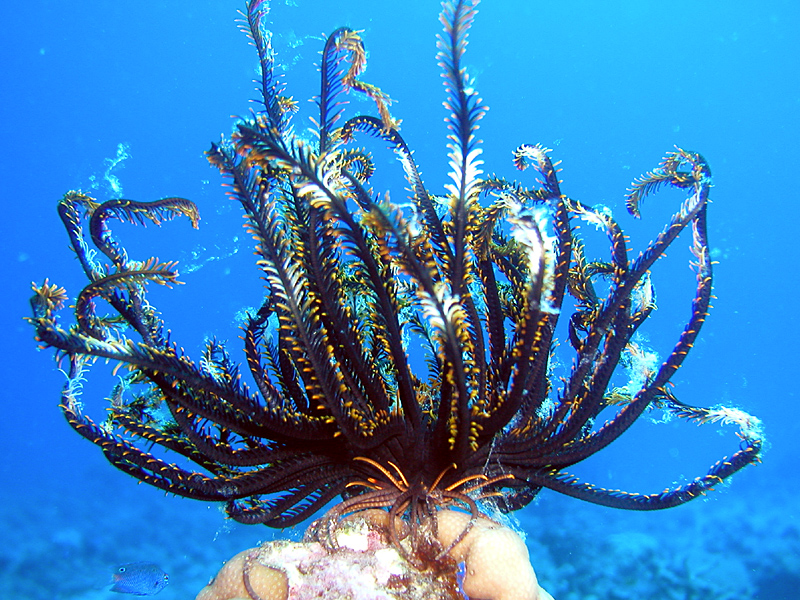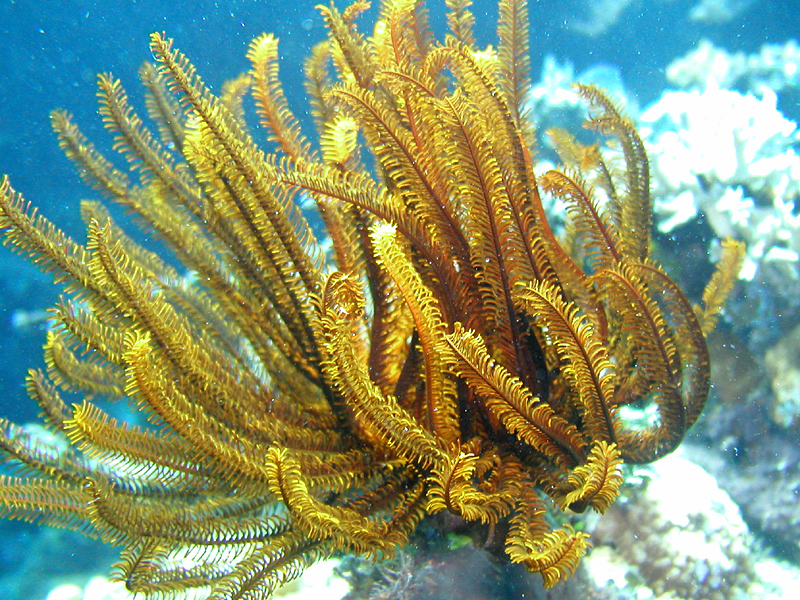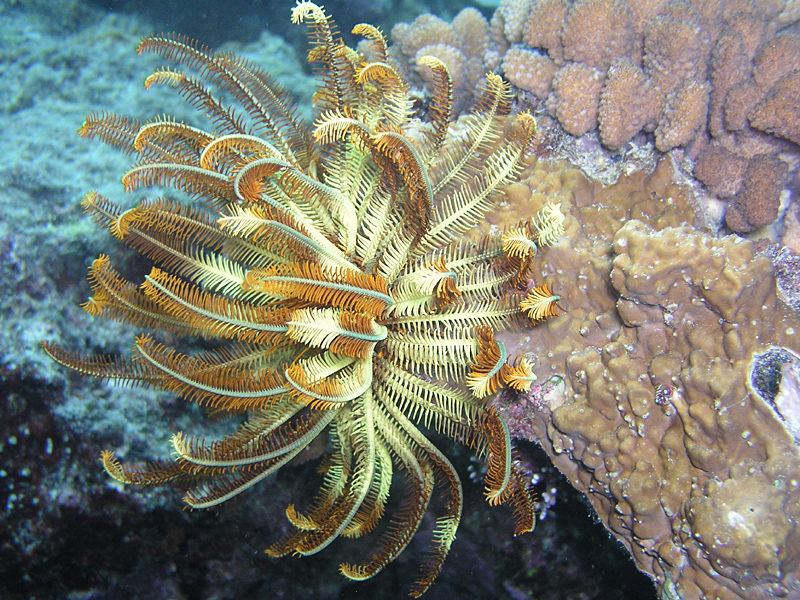
©Lyle Vail and Anne Hoggett: A darker specimen of Oxycomanthus bennetti with a band of white pinnules and yellow pinnule tips. Note the strong cirri.
Colours
Distinguishing features
Comasterids are distinguised from all other featherstar families by having terminal segments of the oral pinnules modified to form a comb. Comasterids a also have a distinctive "feel" due to well developed hooks on most pinnules that cause them to cling like velcro. All Oxycomanthus species have oral pinnules that end in a sharp point but this character is not useful in the field.
Oxycomanthus bennetti is a large crinoid that is always fully exposed, clinging to hard corals with its large, strong cirri. The arms are held upwards and outwards in contrast to other exposed comasterids (such as Clarkcomanthus alternans and species of Comaster) in which the arms appear tangled . Colours include yellow, orange, brown and green. Most individuals are a single colour on the brachials but the pinnules can be a single colour or several colours.
Size
- Size data has not been obtained.
Depth range
- Depth range data is not yet available.
Synonyms
Distribution
Distribution and habitat preferences
Perched on living or dead hard coral in areas of moderate to high water movement. They are often found in aggregations.
Found most commonly on exposed reef slopes from North Point around the northern, eastern and southern side of the Lizard Island group.
Behaviour
Anne Hoggett observed a single specimen spawning just before sunset on 30 December 2008 at an unnamed reef about 4 nautical miles EENE of North Direction Island. Tide was near low but there was still a moderate current running. Spawning was sudden, explosive and it was all over in a couple of seconds (see photos below).
Web resources
References
- Clark, A.M. and F.W.E. Rowe (1971). Monograph of shallow-water Indo-west Pacific echinoderms British Museum (Natural History), London.
- Eeckhaut, I., M.J. Grygier and D. Deheyn (1998). Myzostomes from Papua New Guinea, with related Indo-west Pacific distribution records and description of five new species, Bulletin of Marine Science, 62(3): 841-886. LIRS catalog number 557.
- Meyer, D.L. (1979). Length and spacing of the tube feet in crinoids (Echinodermata) and their role in suspension-feeding, Marine Biology, 51: 361-369. LIRS catalog number 29.
- View all references





